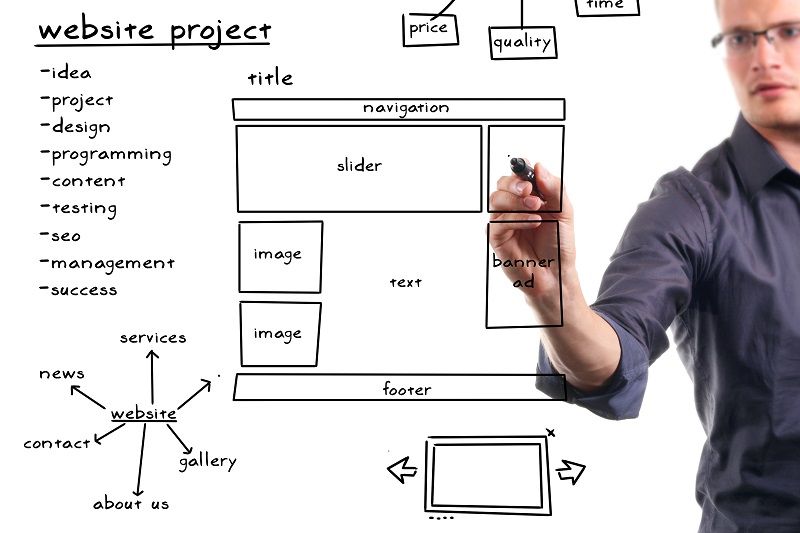Ecommerce Websites

More and more customers are purchasing products online via ecommerce websites and storefronts. In 2020, US ecommerce sales were up nearly 33% from 2019 and accounted for around 16.4% of total global retail sales. The rapid growth of ecommerce is driven by user behaviors, with more people preferring the convenience of an online store. As a result, more businesses need to adapt and put more of their resources into creating or improving their online shopping properties and experiences. ecommerce allows companies to:
Reduce their costs
Reach new audiences
Stay competitive in an ever-changing market
Sell more products in off hours
Do You Need to Invest In Ecommerce?
If you want to take advantage of this immense growth of ecommerce, you need to answer 3 essential questions:
- Do you sell a product?
- Do you sell single transactions?
- Do you sell an ongoing transaction or retainer (e.g., consulting)?
If you do sell products and single transactions, you may need to invest in developing an ecommerce store for your business. An increasing number of consumers are vying for the immediacy and convenience of online shopping, and companies will need to adapt to meet their demands.
The Benefits of Ecommerce
By adapting to the growing demand for ecommerce, businesses can gain many benefits that an online store brings to them. Companies can help reduce their overhead costs by adding or revamping their ecommerce properties, reach more potential customers, and stay competitive in a rapidly changing market.

Benefit 1: Reduce Overhead Cost
One of the most significant benefits of ecommerce websites is that businesses can reduce their overhead costs. For example, a brick-and-mortar store may require a salesperson to entice potential customers into buying products and a cashier to process the sale, in addition to the actual building. With an ecommerce website, the product pages replace the salesperson, the online payment processes replace the cashier, and the retail store is now optional. Businesses can also streamline their inventory and distribution processes, which leads to lower distribution costs.
Benefit 2: Reach More Customers, 24/7
Another benefit to ecommerce is that businesses can reach a wider audience 24/7 all over the world. ecommerce websites can be up and running 24/7, which can allow your business to reach into your customers’ homes at any time to make a sale, rather than only being open for a few hours during the day. An ecommerce store also opens up more possibilities to sell to customers all over a state, country, or the world, being more easily scalable than a brick-and-mortar store. ecommerce also grants new SEO opportunities, increasing your online visibility to potential customers, driving more traffic to your storefront, and increasing sales.
Benefit 3: Stay Competitive & Open Up New Opportunities
Investing in ecommerce gives businesses the chance to remain competitive and meet consumers’ changing demands more efficiently. The popularity and ubiquity of ecommerce, for now, is only increasing, as is the expectation among consumers that retailers must have an online store. An ecommerce store – in combination with a physical store – can help businesses find new revenue streams.
What Your Ecommerce Website Needs
Along with the rising demands of the presence of ecommerce websites comes high standards for those websites. Businesses need to meet certain expectations and implement best practices. Here are a few factors that your ecommerce website needs to succeed.
Need 1: Proper Website & Conversion Architecture
The first part of developing successful ecommerce websites is to have the proper website and conversion architecture. Your ecommerce site needs to deliver a quality customer experience. The overall site hierarchy needs to make sense to the end-user; customers should easily and intuitively navigate between all of your pages. An ecommerce site needs to have fast loading times and asks the customer to do little work when searching for, evaluating, and purchasing your products. Designing for mobile users is another crucial factor for your success.
Your web design should also meet your customers’ demands and needs without sacrificing performance or ease-of-use. Think of commerce as a 3-step process for the customer: learning, buying, and purchasing.

Step 1: Learning
The customer asks themselves, “Is this the right store?” and is determining whether the store has the products or solutions to their problems and whether the store is trustworthy.
Step 2: Buying & Trying
The customer now starts trying to find the right product, compare different products, and see if the business can help them make informed choices.
Step 3: Purchasing
Once a product is chosen, the customer now starts considering how easily purchasable the product is, how to pay for the product, and how the business will deliver the product to them.
Your ecommerce website needs to help the customer throughout this entire commerce process: establish trust and authority right away, enable them to make informed choices from your product catalog, and make purchasing trustworthy and straightforward.
You can add even more tools that increase conversion and customer engagement while improving customer experience.
Need 2: Good Customer Experience
Consumers have high standards regarding ecommerce websites’ user experience, standards that businesses need to meet to succeed. In terms of the overall experience, a good ecommerce site does the following:
- Establishes trust right away with support and contact info (such as phone numbers or email addresses in the header)
- Helps customers navigate the product catalog easily (such as through image navigation on mobile)
- Helps customers find and compare products easily (search features, comparison tools)
- Describes or highlights features of products quickly (images, videos, bullet-point lists on product pages)
- Keeps customers in the loop on the current stage of the purchasing process (from on-page checkout to a completed transaction)
- Helps customers if any questions or issues arise (from customer support numbers to live chatting directly on the website)
These processes are designed to create a simple, user-friendly experience that leads to greater conversions and sales.
Need 3: Desire & Plan to Improve
Once your ecommerce store is set up and working, you should always improve and iterate on your website. Both analytics and customer feedback can help inform your design, leading to improved customer experience and higher conversion rates. Regularly examine your website analytics to identify and fix critical problems, such as addressing shopping cart abandonment or improving existing features and design.
Contact VIEWS To Develop your Ecommerce Websites
Whether you want to create a new ecommerce website or update an existing one, VIEWS Digital Marketing can help. VIEWS provides small- to medium-sized businesses a wide range of digital marketing services and marketing analytics to generate leads, increase traffic, and grow companies. We have proven results in developing and maintaining successful ecommerce websites for our clients. You can see our work first-hand on our clients’ results and websites: WalterFilm and MobileMarkAntennas.
Our team of digital marketing consultants has years of experience working with small- to medium-sized businesses on their online solutions and strategies. Contact us today to see how we can help your ecommerce business.
Develop your digital marketing strategy.
Views Digital Marketing is skilled in developing digital marketing strategies and would welcome the opportunity to talk with you about your company and plans.